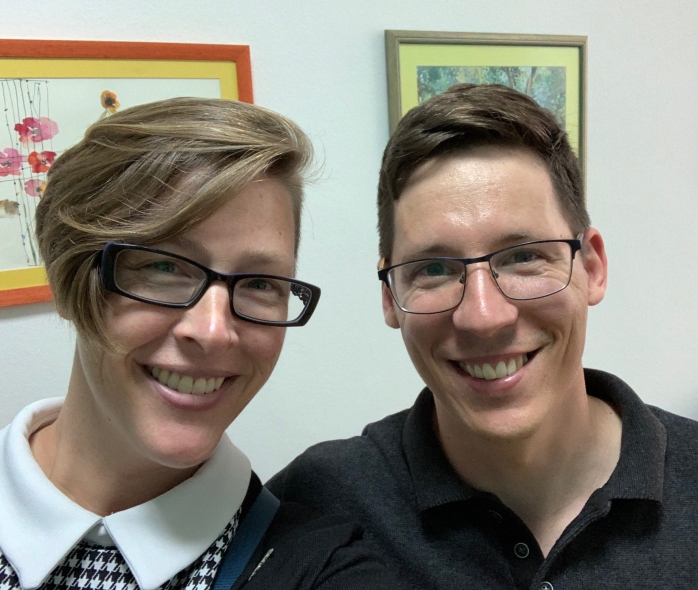Teaching Fearless
The 2018 Washington State Teacher of the Year's Journey toward Hope
Serbia Day 2 – Šid
My first impressions of Serbia were that I had landed in a nation who, learning from their history, is committed to being open and welcoming. My second day confirmed those impressions. I had the pleasure of visiting the small town of Šid on the boarder of Croatia. The reason for this visit was to tour a reception center, which houses migrant families heading north to find permanent homes and to visit local schools who have worked to welcome migrant children into their schools.
One of the most profound aspects of Serbia’s inclusion of migrant children into their schools is the fact that the majority of migrants who come to Serbia are not seeking to stay there, but rather are passing through to different destinations. Many nations would choose to simply process, house, and send away people not seeking asylum in their nation. Serbia is different. They follow closely the United Nations Declaration of Human Rights. Serbia values all humans and recognizes the right of children on the move to a quality and consistent education. This is a unique and honorable stance.
Our day started at Sava Šumanović Secondary School, a local high school who has worked to include their migrant community members into their school. There I met with Jovan Komlenac, the school psychologist, who also teaches classes and the school’s director, Nada Hromiš Aničić. I learned so much about the intentional process and steps they went through to begin inclusion of migrant children into their classrooms.
 Jovan’s compassion and clear commitment to the education of every student in his community immediately struck me. His passion is an obvious catalyst for his school and colleagues. They started their work toward inclusion two years ago, when they connected the children in the migrant center to students in their school to complete projects together and to have migrant families share their stories. They then began to make visits to the migrant center as a community — educators, students, and their parents. With exposure and shared experiences, prejudices immediately broke down and they were then able to begin including migrant students into their classrooms, with the support of all teachers and parents.
Jovan’s compassion and clear commitment to the education of every student in his community immediately struck me. His passion is an obvious catalyst for his school and colleagues. They started their work toward inclusion two years ago, when they connected the children in the migrant center to students in their school to complete projects together and to have migrant families share their stories. They then began to make visits to the migrant center as a community — educators, students, and their parents. With exposure and shared experiences, prejudices immediately broke down and they were then able to begin including migrant students into their classrooms, with the support of all teachers and parents.
Specifically, Jovan explained that they follow these tenets: 1. Everyone must feel safe. 2. Social inclusion is key in order to ensure all students have a sense of belonging at school. 3. Learning content comes only after achieving the first two tenets. They also implemented a very detailed plan to ensure everyone was on board and prepared to welcome their newest community members.
First, school staff and students visited the camp to build a bridge between the school and the migrant families. Second, Jovan did a professional development training with the school staff called, “Suitcase” (You have to leave your home in five minutes, pack a single suitcase, what would you take?) to build empathy and to open them up to the experiences of the migrant students and their families, as well as to build skills to meet the needs of the newcomers. Third, they organized a welcome day for the new students and their families. Fourth, they not only prepared the migrant families, but also the Serbian families, in order to allay fears and build connections. Finally, they included all newcomer students regardless of previous education or length of intended stay in Serbia.
Since beginning inclusion two years ago, they have successfully opened up their classrooms to all migrant children at the Šid reception center. This, alone, is impressive, especially considering the transience of the migrant community they serve. Whether a family is there 3 weeks or 3 years, every effort is made to welcome them and include them in their schools. They use peer-to-peer classroom support, and teachers are intentional in how they create comprehensible input for newcomer students. They work to ensure the same level of academic rigor for all students, but with different entry points. They are still working through this process, but every student benefits from their efforts. I saw this clearly in the classrooms I visited.
I ended my visit to Šid with a tour of the migrant family reception center. The facilities are wanting. There are limited resources and housing is difficult to maintain, with a constantly fluctuating population of migrants. The rooms are far from ideal, with families sleeping 6 to a room, sometimes more. However, they get to keep all of their belongings with them, as each room has storage shelves. The gates to the center are kept unlocked and families are free to come and go as they please, as long as they sign in and out. They are welcome in the greater Šid community. I was there during Ramadan and the center kitchen facilities and cafeteria operated with respect to the needs of the Muslim families they served.
That visit offered me a new glimpse into the migrant experience. An Afghani family shared with me their difficulties moving through the various nations after fleeing persecution in Afghanistan. They were thankful for how they were now treated at the migrant family reception center in Šid, especially because they have a special needs son. They hope to move to Germany where they have a family member waiting for them. It has not been easy, but they say this reception center has been one of the best so far. They’re not sure how long they will stay.
What I saw and experienced in Šid gives me hope. Hope because the individual people in a community make a difference. It is the willingness of the residents, particularly those within the schools, who make life bearable for migrant families. Who welcome them and work to ensure they know they belong, even if these families aren’t planning on staying. This is a lesson for all of us. When we are open and welcoming we all benefit.













Recent Comments